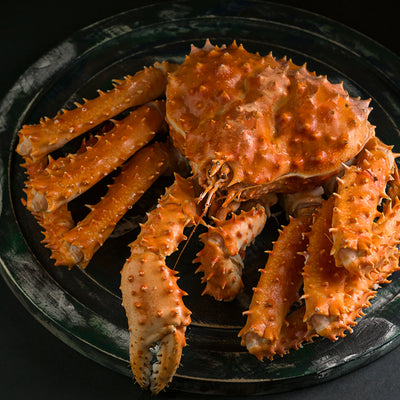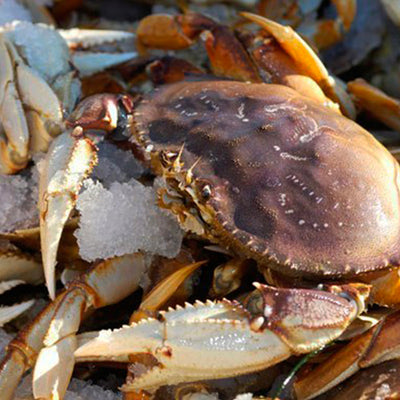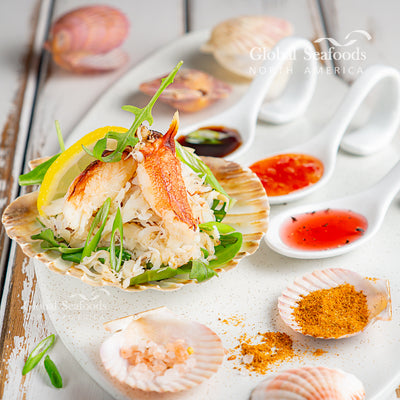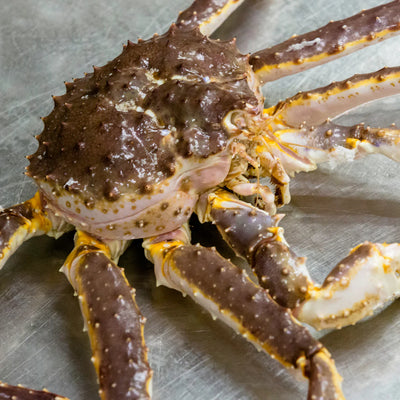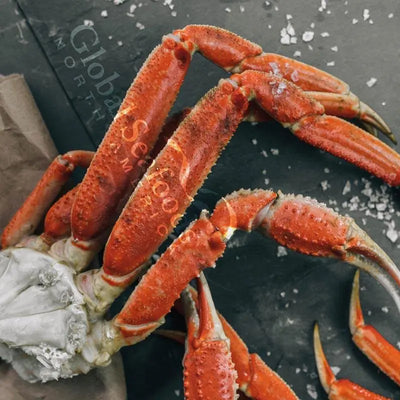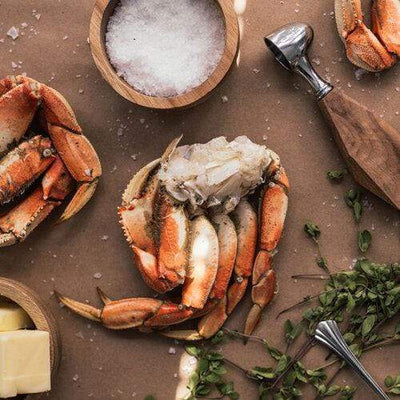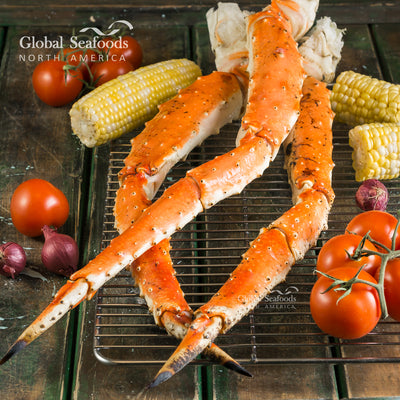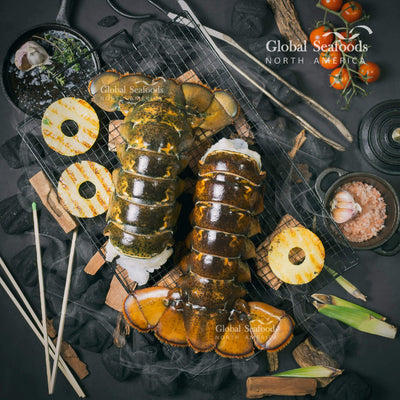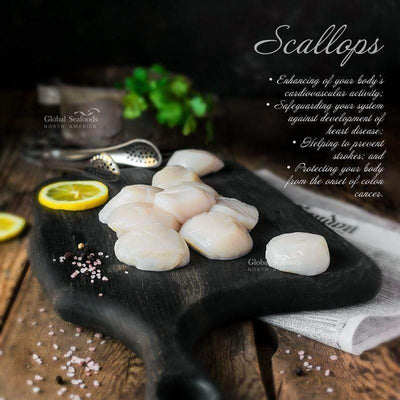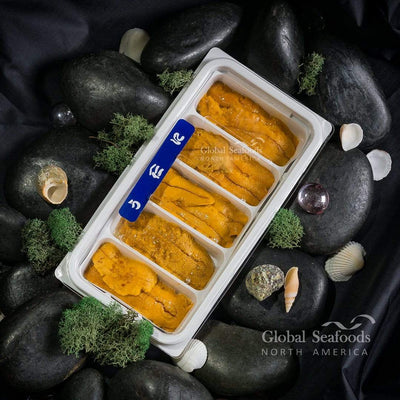The History of Crabbing in America: From Indigenous Practices to Modern Industry

Crabbing in America
Crabbing is not just a seafood tradition but a cornerstone of coastal life in the United States. From the waters of the Chesapeake Bay to the rugged Pacific Northwest, crabbing has long been a vital industry and cultural practice. This fascinating journey of crabbing in America reveals not only how Indigenous peoples harvested crabs for sustenance, but also how the crabbing industry has become a multimillion-dollar sector that supports entire communities today.
In this deep dive, we explore the evolution of crabbing in America—from the early methods used by Native Americans to the development of modern techniques that fuel one of the most sustainable seafood industries in the world. Along the way, we’ll highlight the importance of crabs like the Blue Crab, Dungeness Crab, and King Crab, and why these species are so revered.
For sustainably sourced crabs, from Snow Crab to Golden King Crab, explore the offerings at Global Seafoods.
1. Indigenous Crabbing Practices: The Origins of Crabbing in America
Crabbing in America has its roots in Indigenous fishing practices, which long predate European colonization. Native American tribes along the East Coast, including the Algonquin and Iroquois, were among the first to sustainably harvest crabs, particularly the Blue Crab, which thrives in the Chesapeake Bay. Indigenous peoples used simple but effective tools like spears, woven baskets, and traps to catch crabs, relying on the crabs for both food and cultural practices.
According to Dr. John R. Gillis, a historian of coastal communities, "Indigenous peoples have been harvesting crabs for thousands of years, with techniques that emphasized sustainability and respect for the marine environment." These early crabbing methods laid the foundation for the sustainable practices we see in modern crabbing today.
For more insight into crab species and sustainable fishing practices, check out the Global Seafoods YouTube Channel, which offers tutorials and seafood tips.
2. Crabbing in Colonial America: A Growing Trade
With the arrival of European settlers in the 17th century, crabbing quickly became an important source of food and trade. Colonial settlers adopted many Indigenous techniques, using traps and hand lines to catch crabs, especially along the Chesapeake Bay, where the Blue Crab population flourished. The early American colonies relied on crabbing for both sustenance and commerce, with crabs being traded along the coast and even exported to Europe.
During the colonial period, crabbing also became a symbol of coastal culture in America. The abundant Blue Crab was particularly prized for its sweet, delicate meat, and it became a staple in the diet of settlers from Maryland to Virginia. Crab boils and other communal crab feasts were common, cementing crabs as a symbol of coastal living.
For those looking to experience the rich flavors of Dungeness Crab or Golden King Crab, explore the premium options at Global Seafoods.
3. The Birth of the Modern Crabbing Industry
The commercial crabbing industry in America took off in the late 19th and early 20th centuries. With the development of new harvesting technologies, such as the crab pot, invented in the 1930s by Benjamin F. Lewis in Virginia, crabbing became more efficient, allowing for larger catches and the growth of a booming seafood industry. Crab pots are now the standard tool for commercial crabbing and are used widely along both the East and West Coasts.
Key Developments in Modern Crabbing:
- Refrigeration and Shipping: With advancements in refrigeration and transportation in the early 20th century, crabs could be shipped across the country, expanding their availability beyond coastal communities.
- Sustainability Efforts: As the crabbing industry grew, so did concerns about sustainability. By the mid-20th century, regulations were implemented to prevent overfishing, and today, the U.S. boasts some of the most sustainable crabbing practices globally.
As Sylvia Earle, renowned marine biologist, stated, “Sustainable seafood is essential to the health of our oceans and our future.” The U.S. crabbing industry is a shining example of how sustainable practices can be implemented successfully.
For sustainably sourced crabs like Snow Crab, explore Global Seafoods, where you'll find responsibly harvested crab products.
4. Regional Variations in Crabbing Across the U.S.
Crabbing in America varies significantly depending on the region, with different species of crab dominating different areas. Here’s a look at some of the key crabbing regions and their iconic crabs:
1. Chesapeake Bay (East Coast)
- Iconic Crab: Blue Crab
- Notable Dishes: Maryland crab cakes, crab boils, and crab soup
- Cultural Impact: Blue Crab is central to Maryland’s identity, and the state is known for its annual crab festivals and crab feasts.
2. Pacific Northwest (West Coast)
- Iconic Crab: Dungeness Crab
- Notable Dishes: Steamed Dungeness Crab with butter, crab cocktails, and cioppino
- Cultural Impact: The Pacific Northwest’s Dungeness Crab is a seafood delicacy, and the Dungeness Crab & Seafood Festival in Washington is a highlight of the region’s culinary calendar.
3. Alaska (North Coast)
- Iconic Crab: Golden King Crab
- Notable Dishes: King Crab legs served with garlic butter, crab bisque
- Cultural Impact: Alaska’s King Crab is world-renowned, with crabbing in the frigid waters of the Bering Sea playing a significant role in the state’s economy and culture.
Each region’s crabbing traditions highlight the diversity and richness of American seafood culture. To bring these flavors home, visit Global Seafoods for premium King Crab products.
5. The Economic and Cultural Impact of Crabbing
Crabbing is not just a cultural pastime; it is a vital economic driver for coastal communities across the U.S. The crabbing industry supports thousands of jobs, from crabbers and processors to restaurants and seafood markets. According to the National Oceanic and Atmospheric Administration (NOAA), the U.S. crabbing industry is worth over $600 million annually, with states like Maryland, Louisiana, and Alaska leading the way in commercial crab production.
Culturally, crabbing continues to unite communities through festivals, crab boils, and family traditions. In states like Maryland and Washington, crab feasts are a time-honored tradition where people come together to enjoy locally caught seafood and celebrate their coastal heritage.
To enjoy the same quality crab used in these traditions, check out Global Seafoods for sustainably sourced crab meat and products.
6. The Future of Crabbing in America: Sustainability and Innovation
The future of crabbing in America is promising, thanks to the industry’s commitment to sustainability. U.S. regulations on crabbing, such as size limits, harvest quotas, and seasonal restrictions, ensure that crab populations remain healthy for future generations.
Additionally, technological advancements are helping to make crabbing more efficient and environmentally friendly. Innovations like biodegradable crab pots and electronic monitoring systems are reducing bycatch and minimizing the impact of crabbing on marine ecosystems.
As we move forward, balancing commercial demand with environmental protection will be key to the long-term success of the U.S. crabbing industry.
7. FAQs About Crabbing in America
1. What is the most common type of crab harvested in the U.S.?
The Blue Crab is the most common on the East Coast, while the Dungeness Crab dominates the West Coast. In Alaska, King Crab is highly prized.
2. How long has crabbing been part of American culture?
Crabbing has been part of American culture for thousands of years, starting with Indigenous communities and later becoming a staple for European settlers and modern seafood lovers.
3. Is crabbing sustainable in the U.S.?
Yes, thanks to strict regulations and sustainable fishing practices, crabbing in the U.S. is one of the most environmentally responsible seafood industries.
4. What are some of the most popular crab festivals in the U.S.?
Some top festivals include the Maryland Crab Festival, Dungeness Crab & Seafood Festival, and the Alaska King Crab Festival.
5. Can I order crab online?
Absolutely! Visit Global Seafoods to order high-quality, sustainably sourced crabs delivered to your door.
For more insight into crab species and cooking techniques, check out the Global Seafoods YouTube Channel, where you'll find tutorials and seafood recipes.
Also in News

How to Make Sea Bream Sushi With Dry-Aged Tuna & Crab Roll — Step-by-Step With Chef Joshua
A complete guide to making Sea Bream sushi at home, including filleting, curing, slicing, and building a Dry-Aged Tuna & Crab sushi roll. Chef Joshua shares professional tips for restaurant-quality results.

Boiled Crab for Game Night: Everything You Need for a Perfect Seafood Party
Take your game night to the next level with a Boiled crab party. Learn the best recipes, cooking tips, and hosting hacks for a memorable seafood feast.

Boiled Crab for Date Night: A Romantic Guide to the Perfect Seafood Feast
Make your next date night unforgettable with a romantic Boiled crab experience. This guide covers everything you need to know, from ambiance to the best crab varieties.

